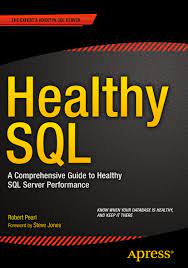Pearlknows HealthySQL Performance Health Check & Evaluation
- Review basic database server configuration for any critical patches or upgrades
- Review and improve database indexes (and any other database settings) to increase application performance
- Review configuration for document storage and provide recommendations for improvement if applicable
- Assist client developers with assessing queries, coding, processes, etc.
- Advise on licensing options for primary database server, development server, and applicability of those licenses to future cloud offerings
- Assist client developers with using database referential integrity
- Continue to evaluate, monitor, implement, and make best practice recommendations to improve & optimize performance
- Continue health check, make recommendations and approved changes
- Assist with migration planning, upgrading, testing, and installation of newly purchased SQL server.
I Health Check
- Disk Space Full/Used/Percentage Free
- Database Log File Usage
- Database Status Check (online, in-recovery, suspect, read-only, etc.)
- Last time database backups/dbcc checkdb
- Error Log Checks –Severity 17 & greater, 701/insufficient memory, I/O requests >15secs
- List of Scheduled Jobs (ie: Backups, Maintenance, etc.)
II Configuration
- OS Build, Service Packs/CUs, Clustered
- TempDB Configuration/File Layout
- Database Sizes, Parameters, Settings
- SQL Server Settings, Configurations, Layout
- Memory Settings/AWE/Target vs. Total Memory/VAS/MemtoLeave
- CPU Processor/Parallelism Settings
- Virtual Page Size
- Active Traces/Default
- Evaluate Enterprise Features (compression, encryption, etc.)
- III Performance Statistics
- Memory Usage/Stats
- Buffer Cache Hit Ratio
- PageLife Expectancy
- IO Activity/ Databases using the most IO
- CPU Usage/Processors
- Causes of the server waits
- Count of missing indexes, by database
- Most important missing indexes
- Unused Indexes
- Most costly indexes (high maintenance)
- Most used indexes
- Most fragmented indexes
- Duplicate Indexes
- Most costly queries, by average IO
- Most costly queries, by average CPU
- Most executed queries
- Queries suffering most from blocking
- Queries with the lowest plan reuse
- TempDB performance/contention
- IV Security Mode
- Super Admin Access Check (sa)
- Weak Password/Blank/Reverse Passwords
- Database/DBO/User Rights (SOX/HIPPA/PCI/PII Compliance)
- List of logins/elevated database permissions
- Information about remote servers
- Security Threat Vulnerability Assessment
V Backup, Disaster Recovery
- Check Backups and maintenance – restore backup test
- Evaluate current DR plan/create strategy & recommendations
- Explore high availability options available
VI Monitoring & Alerting
- Agent Jobs Without Failure Emails
- Alerts Configuration, Corruption & Severity Errors 19-25
- Operators Configured/Enabled /Failsafe
- Database Mail for Notification
VII Compatibility Issues & Migration/Upgrade Readiness
- Database Compatibility Level
- Deprecated Features & Syntax
- Breaking Changes
- Behavioral Changes
LOCATION
All work will be done remotely. Unless as agreed upon or necessitated by the parties.


